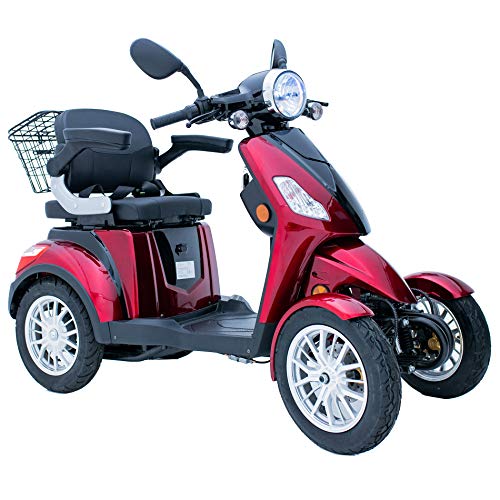Scooter Green Power
Scooters are a fun, safe and easy way to get around. Scooters are also green. But, it's essential to do your research before purchasing one.
Despite being carbon-free on the surface scooters come with hidden costs. The manufacturing and mining processes used to produce the batteries to power electric scooters create significant emissions. The environmental impact of transporting scooters from charging stations to where riders take them is more significant.
Battery Life
Battery is one of the most crucial components of any scooter. It has a significant impact on the eco-friendliness of your scooter. This is because when the battery fails, it releases toxic substances into the air, which can have a huge ecological and economic impact.
Electric scooters are very efficient in energy use, and consume less power that cars use when traveling the same distance. This helps reduce the amount of pollution in the air as well as climate change and traffic congestion. green scooters produce a tiny amount of carbon dioxide when charging. If the source is renewable sources, it can make the e-scooter even greener.
Additionally there are many scooters with swappable batteries that can be used in conjunction with other scooters in a fleet, eliminating the need for companies to transport them to recharge. Some companies are also experimenting with hyper local energy production, which allows the grid to use the power stored in batteries to balance demand and supply.
If you intend to use your scooter for longer journeys you should consider buying an extra capacity battery or a second one that can be swapped. You can travel longer distances and not have to recharge the battery as often. This is crucial if you are in an area that experiences extreme weather conditions. It is also a good idea to charge the battery prior to when you store it for months or weeks. If you don't do this, it could result in the battery not keeping a charge until you require it again which could be frustrating and even dangerous.
Overall, electric scooters are much more environmentally friendly than other forms of transportation. They emit fewer greenhouse gasses that contribute to global warming, and they require less raw materials for their production. They can be charged with clean electricity which can significantly reduce their carbon footprint. When contemplating the durability of a scooter, it is important to consider its entire life cycle. This includes the production of the scooter, the energy needed to charge it and its disposal.
Design
Electric scooters' design could be a major influence on their environmental credentials. Scooters that have regenerative brake systems, like they can convert energy that would be wasted otherwise into battery life so they can travel farther on each charge. Many scooters are also designed for shorter distances, reducing the number of car trips required. And, unlike traditional vehicles, scooters emit no carbon dioxide during use.
green scooter is crucial to take into account the environmental impacts of electric scooters' whole life-cycle. This includes the extraction of raw materials, manufacturing and the disposal at the end of life. The production of lithium-ion batteries can be energy-intensive, and could lead to habitat destruction and pollution of water and soil as well as greenhouse gas emissions. Additionally, mining and transportation of raw materials can also have a significant impact on the environment.
Another problem with scooters is their inability to last. The average scooter will last only several months on the road before it is discarded. This could force scooter manufacturers to extract more aluminum and engage in more resource-intensive tasks such as shipping. Additionally, since the majority of scooters are rented, not owned, the scooters need to be collected and transported to recharging stations (often by cars) when they are empty of juice.
Scooters can contain hazardous wastes that could be a threat to the environment and public health. If the waste isn't properly recycled, it could end up in landfills or rivers, where humans as well as wildlife are at risk.
Scooters are better for the environment as a whole than traditional vehicles. However there are some issues to be taken care of before they can be deemed totally environmentally friendly. If all scooters were made of 100% recyclable materials and the power that drives them is generated from renewable sources, they could be a carbon-free form of transportation.
Maintenance
An electric scooter may be less expensive than a conventional car however, it still requires regular maintenance. The primary element is the battery pack. It must be charged regularly and replaced when it is nearing the expiration date. This is also dependent on the speed controller. This can affect the performance when it is malfunctioning.
If the scooter cuts out or shuts down when riding, it usually indicates that the battery is defective. A defective fuse or charger for the battery could be the reason. Check that the charger's indicators are green (charging) and not red (off). It's recommended to charge the scooter every time it's stored, even if you don't use it.

A malfunctioning normally closed switch on the brake lever is another frequent issue. To test for this, unplug the wire from the brake lever switch and bridge the terminals together in the controller's connector the wire is disconnected from. If the scooter continues to run continuously, the switch is malfunctioning.
Scooter companies send people out to drive cars and trucks all day long, and then bring back any electric scooters that have run out of juice. This service allows them to keep their fleet in good condition. It also lets them charge the batteries before the next ride. However, many consumers do not have this option and must replace their scooters when they are unable to recharge their batteries when on the move.
